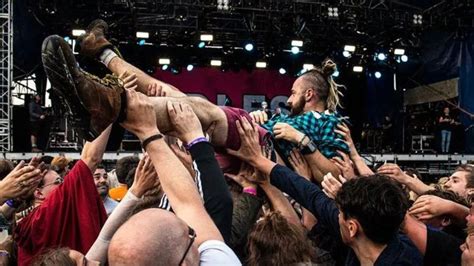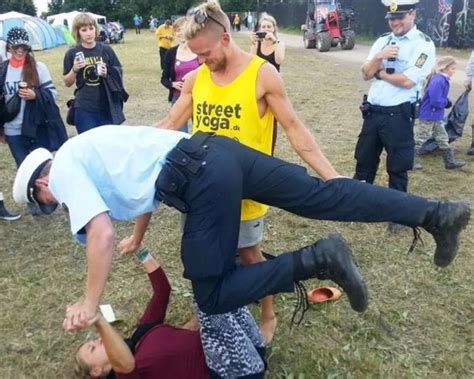
The cast of “Welcome Back, Kotter,” the 1970s sitcom that captured the hearts of a generation with its portrayal of a teacher navigating a classroom of wisecracking underachievers, has experienced both triumphs and tragedies since the show’s cancellation in 1979. While Gabe Kaplan, who played the titular Mr. Kotter, remains active in poker and comedy, several key members of the Sweathogs and other supporting roles have sadly passed away, leaving behind a legacy of laughter and fond memories.
“Welcome Back, Kotter” was a cultural touchstone, launching the careers of several actors and providing a humorous, yet relatable, glimpse into the lives of students often overlooked by the education system. The show’s enduring popularity is a testament to its well-drawn characters and timeless themes of friendship, perseverance, and the impact a dedicated teacher can have. However, the years since its finale have brought both success and sorrow to those associated with the series.
Gabe Kaplan, the star of the show, has largely transitioned away from acting, focusing instead on his passion for poker. He is still involved in comedy, making occasional appearances and sharing anecdotes from his “Kotter” days. Kaplan remains a recognizable face and is often associated with the character that made him a household name.
Marcia Strassman, who played Mr. Kotter’s wife, Julie Kotter, had a prolific career in television and film before her death from breast cancer in 2014 at the age of 66. Strassman appeared in numerous shows, including “MAS*H,” “The Love Boat,” and “Magnum, P.I.” She also had roles in films such as “Honey, I Shrunk the Kids” and its sequel, “Honey, I Blew Up the Kid.” According to a 2014 article in Variety, Strassman was known for her vibrant personality and dedication to her craft.
Robert Hegyes, who played Epstein, the Jewish-Puerto Rican Sweathog known for his comical excuses read aloud in class, died in 2012 at the age of 60 from a heart attack. Hegyes continued to work in television and film after “Kotter,” appearing in shows like “Cagney & Lacey” and “Diagnosis: Murder.” He also taught acting and screenwriting. “Robert was a very talented actor and a great friend,” Kaplan told CNN in a statement following Hegyes’ death. “He brought a unique energy to ‘Welcome Back, Kotter.'”
John Sylvester White, who played the perpetually exasperated Principal Woodman, passed away in 1988 at the age of 68. White was a seasoned character actor with a long list of credits in television and film before “Kotter,” often playing authority figures. His portrayal of Woodman as the perpetually irritated principal was a perfect foil to the Sweathogs’ antics.
Charles Fleischer, who played Carvelli, another member of the Sweathogs, is still active in the entertainment industry, primarily as a voice actor. He is best known for voicing Roger Rabbit in “Who Framed Roger Rabbit.” Fleischer has also worked on numerous other animated projects, including “The Polar Express” and “Rango.”
The most widely known member of the Sweathogs, John Travolta, who played Vinnie Barbarino, the charismatic leader of the group, went on to become a major Hollywood star. His career skyrocketed after “Kotter,” with starring roles in films like “Saturday Night Fever,” “Grease,” and “Pulp Fiction.” Travolta has received numerous awards and accolades for his work and remains a prominent figure in the entertainment industry.
Lawrence Hilton-Jacobs, who portrayed Freddie “Boom Boom” Washington, another Sweathog, has continued to work steadily in television and film since the show ended. He has appeared in numerous roles, including parts in “Roots,” “Hill Street Blues,” and “Law & Order.” Hilton-Jacobs has also been involved in stage productions.
Ron Palillo, who played Arnold Horshack, the lovable but awkward Sweathog known for his high-pitched voice and signature hand raise, passed away in 2012 at the age of 63 from a heart attack. Palillo continued to act in television and film after “Kotter,” also pursuing a career as an art teacher. He taught at a high school in Florida. “Ron was a sweet, kind man,” Kaplan said in a statement after Palillo’s death. “He was a talented actor and a good friend.”
The series remains a beloved piece of television history, remembered for its humor, its heart, and its portrayal of the challenges and triumphs of both teachers and students. The cast’s subsequent careers, both successful and tragic, serve as a reminder of the fleeting nature of fame and the enduring power of human connection.
The legacy of “Welcome Back, Kotter” extends beyond its entertainment value. It tackled social issues relevant to the 1970s, such as urban education, poverty, and cultural identity, albeit through a comedic lens. The show offered a platform for diverse characters and storylines, contributing to a broader representation of American society on television.
The show’s impact on popular culture is undeniable. Catchphrases like “Up your nose with a rubber hose!” became ingrained in the lexicon, and the characters of the Sweathogs became iconic figures. “Welcome Back, Kotter” also helped to popularize disco music and fashion, reflecting the trends of the era. The series’ theme song, performed by John Sebastian, was a chart-topping hit and remains instantly recognizable.
The show’s success was partly attributed to its relatable characters and storylines. The Sweathogs, despite their disruptive behavior, were portrayed as intelligent and capable individuals who were simply disengaged from the traditional education system. Mr. Kotter’s unconventional teaching methods and genuine concern for his students resonated with audiences who felt that the education system often failed to meet the needs of all learners.
However, the show was not without its critics. Some educators argued that it presented an unrealistic and even harmful portrayal of classroom dynamics. They contended that the Sweathogs’ behavior was disruptive and disrespectful and that Mr. Kotter’s methods were not sustainable in a real-world setting. Others criticized the show for perpetuating stereotypes about urban youth.
Despite these criticisms, “Welcome Back, Kotter” remains a fondly remembered and influential television series. Its enduring appeal is a testament to its ability to connect with audiences on an emotional level and to explore universal themes of friendship, belonging, and the importance of education. The show’s cast, both those who are still with us and those who have passed on, left an indelible mark on popular culture, and their contributions continue to be celebrated by fans around the world.
The show’s influence can still be seen in contemporary television and film. The “misfit students” trope, popularized by “Welcome Back, Kotter,” has been used in numerous subsequent productions, often with similar themes of unconventional teachers and students who overcome adversity. The show’s emphasis on character development and its willingness to tackle social issues have also influenced later generations of television writers and producers.
The show’s production itself had its share of behind-the-scenes stories. The chemistry between the cast members was often cited as a key factor in the show’s success. The actors developed genuine friendships that extended beyond the set, and their camaraderie was evident on screen. However, there were also reports of tensions and disagreements, particularly between Gabe Kaplan and some of the other cast members. These conflicts, while not uncommon in television production, sometimes overshadowed the show’s positive aspects.
The show was also notable for its use of improvisation. The actors were often given the freedom to add their own lines and jokes, which contributed to the show’s spontaneity and humor. This improvisational approach allowed the actors to develop their characters more fully and to create memorable moments that resonated with audiences.
The show’s popularity led to numerous merchandising opportunities, including toys, books, and clothing. The Sweathogs became cultural icons, and their images were emblazoned on everything from t-shirts to lunch boxes. This merchandising frenzy further solidified the show’s place in popular culture and ensured that its legacy would endure for years to come.
The show’s success also spawned a short-lived spin-off series called “Mr. T and Tina,” starring Pat Morita as Taro Takahashi, a character who had appeared in several episodes of “Welcome Back, Kotter.” However, “Mr. T and Tina” was not well-received and was quickly canceled.
Looking back, “Welcome Back, Kotter” stands as a significant piece of television history. It captured the spirit of the 1970s and provided a platform for diverse voices and perspectives. The show’s legacy extends beyond its entertainment value, influencing subsequent generations of television writers, producers, and actors. While some members of the cast are no longer with us, their contributions to the show and to popular culture continue to be celebrated by fans around the world. The show remains a testament to the power of television to entertain, inform, and connect with audiences on an emotional level. The humor, heart, and relatable characters of “Welcome Back, Kotter” have ensured its place as a classic of the sitcom genre.
The show’s open-ended nature also allowed for storylines that touched upon real-world issues, even if framed within a comedic context. Episodes explored topics such as peer pressure, bullying, and the challenges faced by immigrant families. While the show’s primary goal was to entertain, it also subtly addressed important social issues, contributing to a broader cultural conversation.
The enduring popularity of “Welcome Back, Kotter” is also evident in its continued presence on streaming services and in syndication. New generations of viewers are discovering the show and appreciating its humor and its timeless themes. The show’s accessibility has helped to ensure that its legacy will continue to thrive for years to come.
The show’s impact on the careers of its young stars, particularly John Travolta, cannot be overstated. “Welcome Back, Kotter” provided Travolta with a platform to showcase his talents and to develop a fan base that would follow him throughout his career. His success after “Kotter” helped to solidify the show’s place in television history and to enhance the reputations of the other cast members.
The show’s setting, James Buchanan High School in Brooklyn, New York, added to its authenticity and its appeal to urban audiences. The school served as a microcosm of American society, reflecting the diverse backgrounds and experiences of its students. The show’s portrayal of Brooklyn as a vibrant and culturally rich community resonated with viewers who lived in similar environments.
The show also benefited from its talented writing team, which included several writers who went on to have successful careers in television and film. The writers were able to create memorable characters and storylines that balanced humor with heart, appealing to a wide range of viewers.
The show’s success also contributed to a broader trend of television shows that focused on the lives of teenagers and young adults. “Welcome Back, Kotter” helped to pave the way for other successful sitcoms such as “Happy Days,” “Laverne & Shirley,” and “Diff’rent Strokes,” which also explored the challenges and triumphs of growing up in America.
The show’s use of catchphrases and running gags became a trademark of its humor. Phrases like “Up your nose with a rubber hose!” and Horshack’s signature “Ooh! Ooh! Ooh!” became instantly recognizable and were often repeated by fans. These catchphrases added to the show’s comedic appeal and helped to create a sense of community among its viewers.
The show’s portrayal of Mr. Kotter as a former Sweathog who returned to his alma mater to teach was a clever premise that allowed the show to explore themes of redemption and second chances. Mr. Kotter’s ability to connect with his students on a personal level and to understand their struggles made him a relatable and inspiring figure.
The show’s exploration of the teacher-student relationship was also a key factor in its success. “Welcome Back, Kotter” portrayed teachers as more than just authority figures; they were also mentors, friends, and confidants. The show emphasized the importance of building positive relationships between teachers and students and of creating a supportive learning environment.
The show’s themes of acceptance and tolerance also resonated with audiences. “Welcome Back, Kotter” celebrated diversity and encouraged viewers to embrace those who were different. The show’s portrayal of the Sweathogs as a group of friends who accepted each other despite their differences was a positive message that appealed to viewers of all ages.
The show’s use of music also contributed to its appeal. The theme song, performed by John Sebastian, was a chart-topping hit that perfectly captured the show’s upbeat and optimistic tone. The show also featured other popular songs of the era, adding to its authenticity and its connection to the cultural zeitgeist.
The show’s impact on the representation of Jewish characters on television was also significant. Gabe Kaplan’s portrayal of Mr. Kotter as a proud and unapologetic Jewish man was a departure from the stereotypical portrayals of Jewish characters that had often been seen on television. “Welcome Back, Kotter” helped to normalize Jewish identity and to promote understanding and acceptance.
The show’s exploration of the challenges faced by urban schools and students was also groundbreaking. “Welcome Back, Kotter” was one of the first television shows to realistically portray the struggles of students in underfunded and overcrowded schools. The show’s willingness to tackle these issues helped to raise awareness and to spark conversations about education reform.
The show’s lasting legacy is a testament to its ability to connect with audiences on an emotional level and to explore universal themes of friendship, belonging, and the importance of education. The cast and crew of “Welcome Back, Kotter” created a television classic that continues to be enjoyed by viewers of all ages. The show’s humor, heart, and relatable characters have ensured its place in television history.
The show’s comedic brilliance often masked its deeper exploration of societal issues. While it entertained, it subtly encouraged viewers to consider the challenges faced by marginalized communities and the importance of providing opportunities for all individuals to succeed. This layered approach contributed to its long-lasting impact and its continued relevance.
Frequently Asked Questions (FAQ)
1. What is “Welcome Back, Kotter” about?
“Welcome Back, Kotter” is a 1970s sitcom that revolves around Gabe Kotter, a teacher who returns to his alma mater, James Buchanan High School in Brooklyn, to teach a class of remedial students known as the “Sweathogs.” The show focuses on Kotter’s unconventional teaching methods and his efforts to connect with his students, who are often portrayed as underachievers with a knack for humor and wisecracks. The series explores themes of friendship, education, and the challenges faced by urban youth.
2. Who were the main cast members of “Welcome Back, Kotter”?
The main cast members of “Welcome Back, Kotter” included:
- Gabe Kaplan as Gabe Kotter
- Marcia Strassman as Julie Kotter
- John Travolta as Vinnie Barbarino
- Lawrence Hilton-Jacobs as Freddie “Boom Boom” Washington
- Robert Hegyes as Juan Epstein
- Ron Palillo as Arnold Horshack
- John Sylvester White as Principal Woodman
- Charles Fleischer as Carvelli
3. What happened to the cast of “Welcome Back, Kotter” after the show ended?
After “Welcome Back, Kotter” ended in 1979, the cast members pursued various paths:
- Gabe Kaplan transitioned away from acting and focused on poker and comedy.
- Marcia Strassman continued to work in television and film until her death in 2014.
- John Travolta became a major Hollywood star.
- Lawrence Hilton-Jacobs continued to work steadily in television and film.
- Robert Hegyes continued to work in television and film and also taught acting and screenwriting until his death in 2012.
- Ron Palillo continued to act and also pursued a career as an art teacher until his death in 2012.
- John Sylvester White continued acting until his death in 1988.
- Charles Fleischer continued his career as a voice actor.
4. Which cast members of “Welcome Back, Kotter” have passed away?
Several cast members of “Welcome Back, Kotter” have passed away, including:
- Marcia Strassman (Julie Kotter) died in 2014.
- Robert Hegyes (Juan Epstein) died in 2012.
- John Sylvester White (Principal Woodman) died in 1988.
- Ron Palillo (Arnold Horshack) died in 2012.
5. What is the legacy of “Welcome Back, Kotter”?
“Welcome Back, Kotter” is remembered as a beloved piece of television history for its humor, its heart, and its portrayal of the challenges and triumphs of both teachers and students. The show tackled social issues relevant to the 1970s and helped launch the careers of several actors, most notably John Travolta. The show’s characters and catchphrases became iconic, and its themes of friendship, belonging, and the importance of education continue to resonate with audiences today. The show also influenced subsequent generations of television writers and producers. The series’ accessibility on streaming services ensures its legacy will thrive for years to come.









